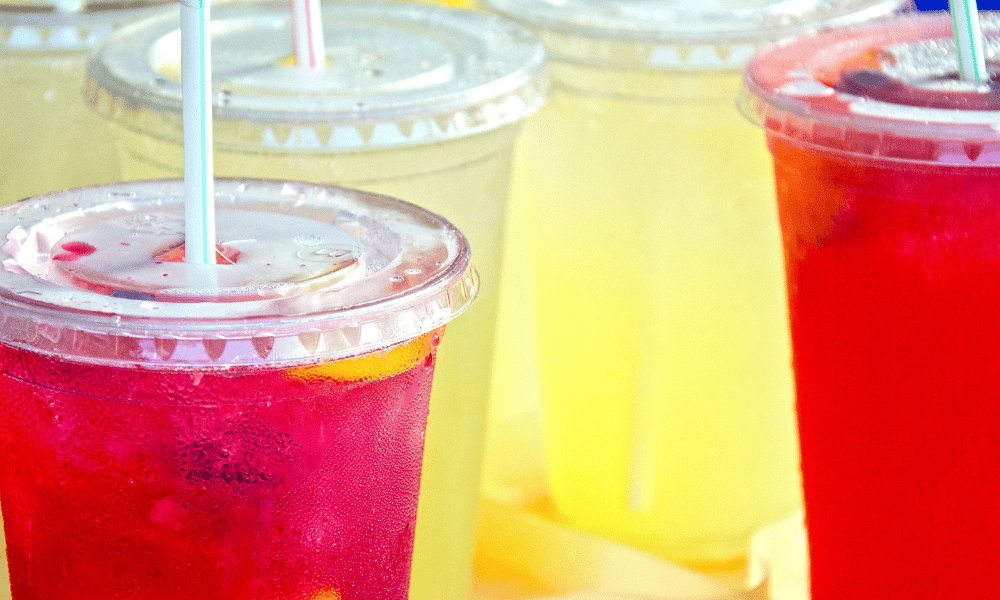As a child, it is always a treat to feel the fizzy bubbles of a sugary drink on a hot summer day. For most people, lemonade will be their go-to citrus fizzy drink. But is the less popular limeade that much different from lemonade?
As their names would suggest, the main difference between limeade and lemonade is their base ingredients – lime and lemon, respectively. These different citrus fruits affect the taste of the drink a noticeable amount.
Limeade has only recently become popular in the UK and the US, with major sugary drink companies like Sprite developing their own iterations. But limeade is not a new concept.
It has been prevalent in India, Pakistan, and Persia for centuries. However, each country has their own traditional name for limeade, such as limbu pani.
Limeade is a very simple drink from sweetened lime juice and water to dilute the juice’s tartness and sourness. Essentially, you will find a take – fizzy or otherwise – of limeade anywhere that limes naturally grow.
Limeade can be drunk as its own sweet beverage, which is delicious in its own right – however, the tart taste of lime pairs very well with fresh flavours such as mint. The tartness is also strong enough to make for a great cocktail when paired with plain vodka.
Some historical findings suggest that lemonade has been around since the 13th century, finding traces of a sweet lemon drink in Egypt. However, it was better known as qatarmizat.
The sweetly sour lemonade known today was sold in France in 1676. Then a carbonated version found on most supermarket shelves and in various fast food chains was made in the UK in 1833.
Since then, there have been a variety of takes on lemonade, but the tart, sour and citrus taste of lemonade has remained. Now lemonade is enjoyed all year round, and it is the go-to drink for many.
Traditionally made or homemade lemonade tends to be a little cloudy anyway because of excess pulp when the juice is squeezed. But cloudy lemonade is made using both the juice and the zest of lemons, giving it a zesty tartness alongside the sour juice. 
Before I start, I just want to give you my definition of limeade. I think Limeade is pretty much the exact thing a lemonade, just swap out the lemon juice for lime juice. Keep everything else the same (i.e. the sugar, water so on) but swap out the juice.

Differences Between Limeade and Lemonade
Despite what some may think, limeade and lemonade have differences beyond their slightly varied names. Here are the key differences between limeade and lemonade:
- Base Ingredient – Limeade and lemonade rely on similar but different ingredients to flavour their drinks. Limeade is made using only limes, while lemonade is made using only lemons.
- Dominant Taste – Limes are naturally more tart than sour, whereas lemons are the opposite. This is reflected in limeade and lemonade. Limeade is noticeably tarter and overall more complex, while lemonade is sourer.
- Levels Of Sweetness – Limeade usually requires more sweetener to offset the noticeable tartness. Limes are already fairly sweet, so this extra sweetness dramatically differs from the sweetness of lemonade. Lemonade is also sweet but less so as it doesn’t need to be.
- Amount Of Variations – Lemons are much more prevalent in world cuisines mainly because their sourness makes for a good contrast to a whole range of other tastes. That is why there are significantly more lemonade variations compared to limeade.

- Place Of Origin – It is difficult to track down exactly where limeade was invented, but most historical sources point to South East Asia as its place of origin. Lemonade, as we know it today, was first recorded in Egypt.
Similarities Between Limeade and Lemonade
Some people find it hard to distinguish between lemonade and limeade, and for good reason. There are plenty of characteristics that the two drink share, such as:
- Added Ingredients – Though their main base ingredient is different, limeade and lemonade both need water and a sweetener to offset the sour bitterness of the lemons and limes. Traditionally, honey is used in both cases, but regular simple syrup or cane sugar is most popular today.
- Appearance – Lemonade varieties aside, limeade and lemonade do not look that different. The pulp of both kinds of fruit and their juice is a cloudy white colour. When this juice is turned into a sweet drink, the plain colour remains, making it nearly impossible to tell lemonade and limeade apart by appearance.
- Fresh Citrusy Drink – At the end of the day, lemonade and limeade use a citrus fruit for flavour. So both drinks remain refreshing on hot days with an identifiably citrusy zing.
- Sourness – Because they are both made from citrus fruit, limeade and lemonade have a distinct sourness even if other flavours overpower that sourness.
- Easy To Make – Regardless of the main ingredient used, limeade and lemonade have the same production process of combining sugar and water. As such, you can easily make either drink at home with little effort.
How To Make a Healthier Lemonade or Limeade? – Dr. Berg On Keto Lemonade
FAQ
Is lemonade and lime juice the same?
What does a limeade taste like?
Are Limeades good for you?
Why does Brazilian lemonade use limes?
